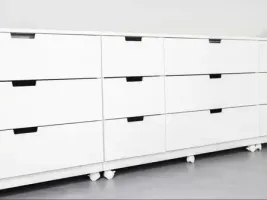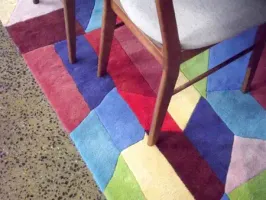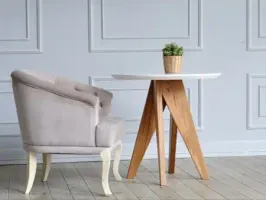Overview of Sustainability in the Home Furniture Industry
The home furniture industry is making strides in sustainable product development, as customers become increasingly aware of the environmental impacts associated with production and consumption. Manufacturers and retailers are responding to the demand for sustainable home furniture by offering sustainable solutions such as using recycled materials, energy efficient processes, and water conservation practices. Sustainable home furniture offers consumers an opportunity to be part of the environmental movement, while still enjoying the aesthetic and functional benefits of traditional furniture.
2. Benefits of Sustainability in the Home Furniture Industry
A. Environmental Benefits
-
Preserving natural ecosystems: By investing in sustainable home furniture, such as pieces crafted from sustainable wood sources, homeowners can help reduce deforestation and protect forest ecosystems. Sustainable woods are often certified by organizations like the Forest Stewardship Council (FSC), which promotes responsible forestry management. Additionally, sustainable fabrics like organic cotton and hemp are often used in upholstered furniture like sofas and armchairs. These fabrics are grown without pesticides or other chemicals that can harm the ecosystem — reducing runoff pollution into waterways and soil contamination near farms where these fabrics are grown.
-
Energy consumption: By using sustainable materials such as bamboo or recycled plastics, energy consumption is greatly reduced during production - meaning that fewer resources are needed to manufacture each item. This helps to reduce emissions, which in turn contributes to improved air quality.
-
Water conservation: Sustainable furniture manufacturers employ various techniques to conserve water resources. One of the methods involves the collection and reuse of rainwater for production processes. This approach reduces the amount of water consumed during production, making it an effective way to conserve water. Another approach that sustainable furniture manufacturers use is the use of sustainable materials. For example, they use recycled wood and sustainable fabrics to reduce the amount of water used in production. Moreover, sustainable farming practices can also help conserve water resources. By reducing water consumption and preventing pollution from agricultural runoff, sustainable farming practices contribute to the preservation of water resources.
-
Durability Sustainable materials such as bamboo are also known for their durability, meaning furniture items made from sustainable materials last longer - further reducing the environmental footprint of the home furniture industry.
B. Social Benefits
-
Air quality: One of the main health benefits of sustainable furniture is that it is made from renewable or recycled materials, meaning it will not contribute to the release of harmful toxins into the environment. This helps reduce air pollution and other environmental hazards, making sustainable furniture a much healthier choice than traditional furniture.
-
Less chemical exposure: Another advantage of sustainable home furniture is that it can be made with healthier materials such as bamboo or non-toxic finishes that are free from toxic chemicals. This keeps indoor air quality higher and helps protect families from potential health risks associated with chemical exposure.
-
Ethical working conditions: The sustainable home furniture industry has a strong focus on ensuring the ethical and humane conditions of those involved in production processes. This includes upholding fair wages for workers, providing quality healthcare and safety measures, respecting the rights of workers to collective bargaining, and providing sustainable working environments. Many sustainable home furniture producers are also members of sustainable forestry organizations, which sets standards for sustainable harvesting and sustainable forestry practices.
C. Economic Benefits
-
Reduced operating costs due to efficient energy and resource use.
-
Increased customer loyalty and brand recognition from customers who prioritize sustainable products.
-
Lower waste disposal costs by using sustainable materials that can be recycled or reused.
-
Longer product life cycles, resulting in fewer replacements and lower maintenance costs over time.
3. Producing Sustainable Home Furniture
A. Materials & Inputs
-
Recycled plastics: Recycled plastics are used to create pieces of furniture that are not only sustainable but also sturdy and durable. Recycled plastic can be derived from post-consumer waste such as bottles or other discarded items.
-
Certified sustainable woods: Certified sustainable woods are sourced from responsibly managed forests and plantations that are replanted or restored after harvesting. This ensures that the forest is maintained, and the environment preserved for future generations.
-
Sustainable cotton and linen fabrics: Sustainable cotton and linen fabrics come from crops grown with sustainable practices. This includes natural fertilizers, crop rotation techniques to ensure soil health and prevent erosion, as well as water management techniques to ensure clean water access for both plants and animals in the area.
-
Hemp fabric: Hemp is another popular sustainable material for furniture because it doesn’t require much pesticide use when grown organically like cotton does; instead requiring only natural pest management techniques that are less damaging to the environment compared to conventional farming practices. Hemp fabric can be weaved together into durable fabrics that are perfect for upholstering sofas, chairs and ottomans while remaining incredibly soft to the touch.
-
Jute fibers: Jute is a vegetable fiber extracted from the stem of a jute plant native to India but grown all over Asia now. Jute fibers make sturdy yet lightweight fabrics that can easily adapt into unique shapes when turned into rope-like strands woven together like twine – perfect for making baskets, rugs and carpets with an interesting texture but sustainable element too!
-
Organic coatings and glues: Organic coatings can be used as a finish on furniture to ensure durability while avoiding volatile organic compounds (VOCs). Natural glues made of vegetable oils, beeswax or animal proteins can be used instead of synthetic adhesives to reduce chemical exposure in the home environment.
-
Bamboo: Renewable bamboo is a sustainable material used in the production of sustainable furniture due to its fast growth and renewability rate. Bamboo plants regenerate quickly so they don’t need replanting, making it an ideal sustainable material choice for furniture. Bamboo can be made into beautiful cabinets and other storage options as well as tables and chairs with different styles without compromising on quality or sustainability.
B. Innovative Technologies
-
3D printing technologies have been used to create complex parts for modern furniture designs, reducing costs associated with traditional mass production processes.
-
CNC machining technology has been used to cut wood components with greater precision than ever before and laser cutting technology can be used to create intricate designs with minimal material waste.
-
Thermoforming utilizes a combination of heat and pressure applied to thermoplastic sheets. This process is advantageous as it enables sustainable furniture companies to reduce waste from traditional cutting and assembly operations. Additionally, this technology allows for the sustainable production of complex, 3D shapes and intricate design details that weren't possible with traditional manufacturing methods.
-
Lamination compression molding (LCM). This method allows sustainable furniture makers to create complex components out of recycled wood fiber materials, such as sawdust or wood chips. LCM can also be used to create sustainable countertops, floating shelves, table tops and other components that are both durable and aesthetically pleasing.
-
Powder coating on metal components to reduce VOC emissions associated with traditional liquid coatings. Powder coating also allows for an efficient application of paint with minimal overspray and ease of cleanup.
4. Curated list of Sustainable Home Furniture Brands
-
Maiden Home
-
West Elm
-
Sabai
-
Inside Weather
-
Avocado
-
Parachute
-
The Citizenry
-
Burrow
-
Made Trade
-
Medley
-
Knoll
-
Joybird
-
Goodee
-
Koskela
5. Sustainable Home Furniture Standards
-
Cradle To Cradle (C2C)
-
Fair Trade
-
Green Guard
-
Eco Institut
-
Made Safe
-
Forest Stewardship Council
-
DownPass
-
Global Organic Textiles Standard (GOTS)









